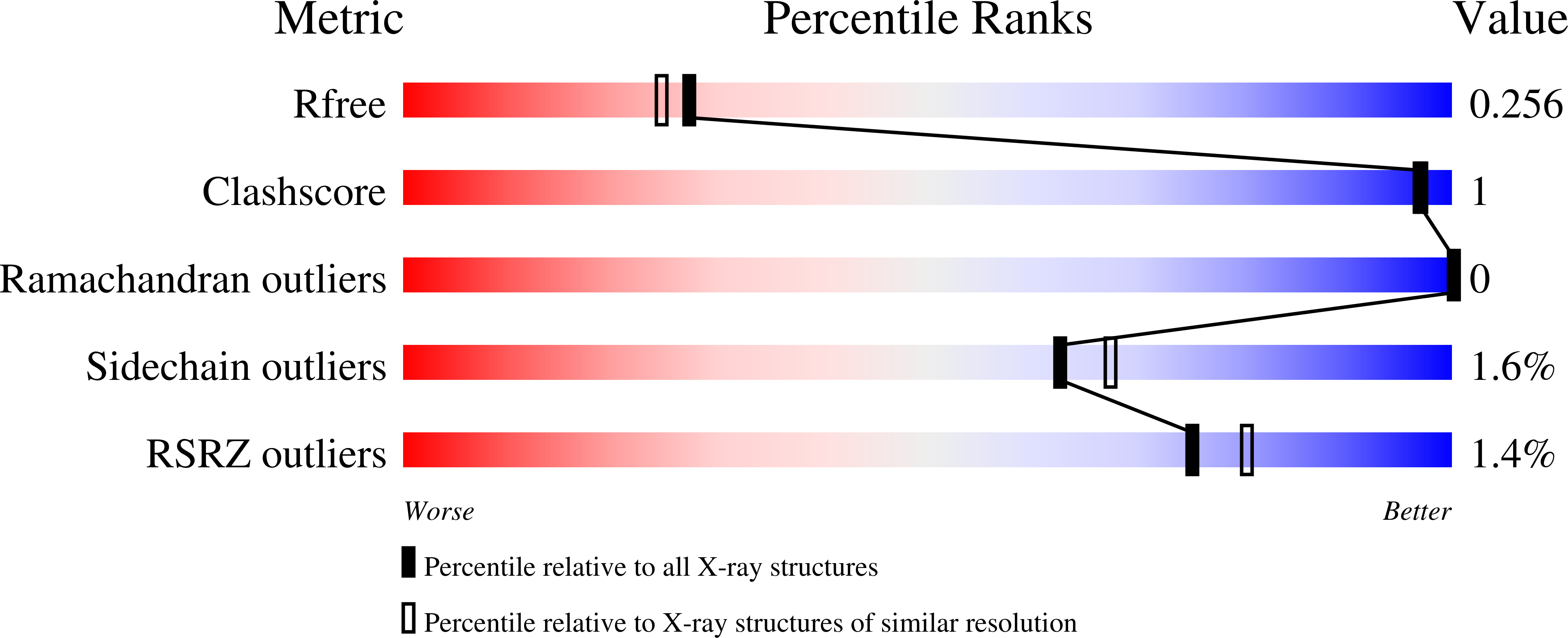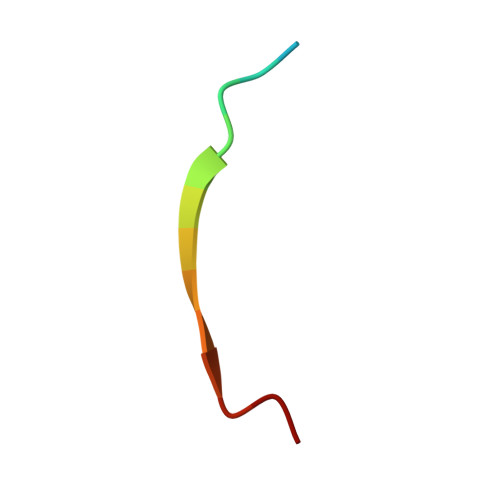Molecular and Structural Basis of Escrt-III Recruitment to Membranes During Archaeal Cell Division.
Samson, R.Y., Obita, T., Hodgson, B., Shaw, M.K., Chong, P.L., Williams, R.L., Bell, S.D.(2011) Mol Cell 41: 186
- PubMed: 21255729
- DOI: https://doi.org/10.1016/j.molcel.2010.12.018
- Primary Citation of Related Structures:
2XVC - PubMed Abstract:
Members of the crenarchaeal kingdom, such as Sulfolobus, divide by binary fission yet lack genes for the otherwise near-ubiquitous tubulin and actin superfamilies of cytoskeletal proteins. Recent work has established that Sulfolobus homologs of the eukaryotic ESCRT-III and Vps4 components of the ESCRT machinery play an important role in Sulfolobus cell division. In eukaryotes, several pathways recruit ESCRT-III proteins to their sites of action. However, the positioning determinants for archaeal ESCRT-III are not known. Here, we identify a protein, CdvA, that is responsible for recruiting Sulfolobus ESCRT-III to membranes. Overexpression of the isolated ESCRT-III domain that interacts with CdvA results in the generation of nucleoid-free cells. Furthermore, CdvA and ESCRT-III synergize to deform archaeal membranes in vitro. The structure of the CdvA/ESCRT-III interface gives insight into the evolution of the more complex and modular eukaryotic ESCRT complex.
Organizational Affiliation:
Sir William Dunn School of Pathology, South Parks Road, Oxford OX1 3RE, UK.
















